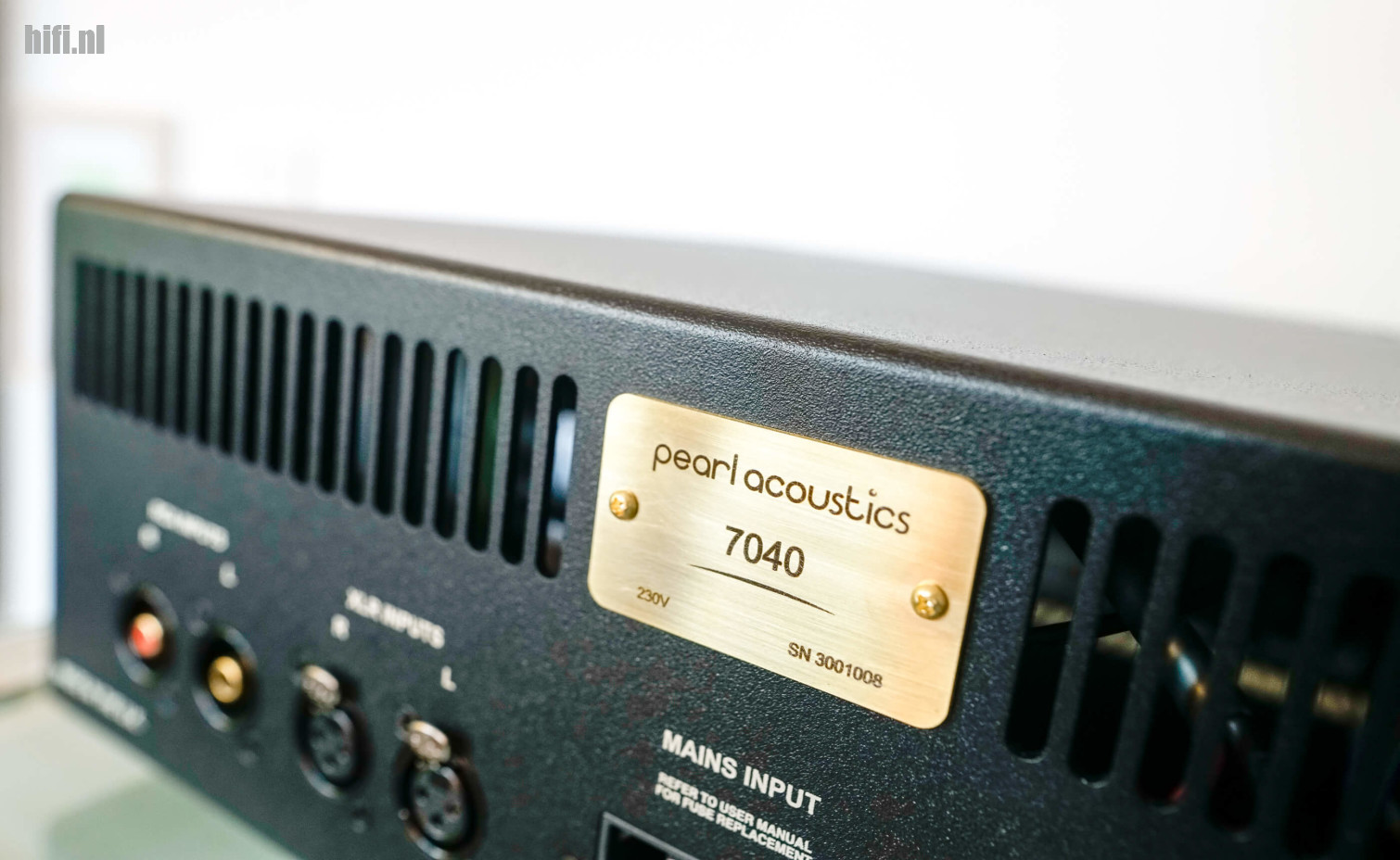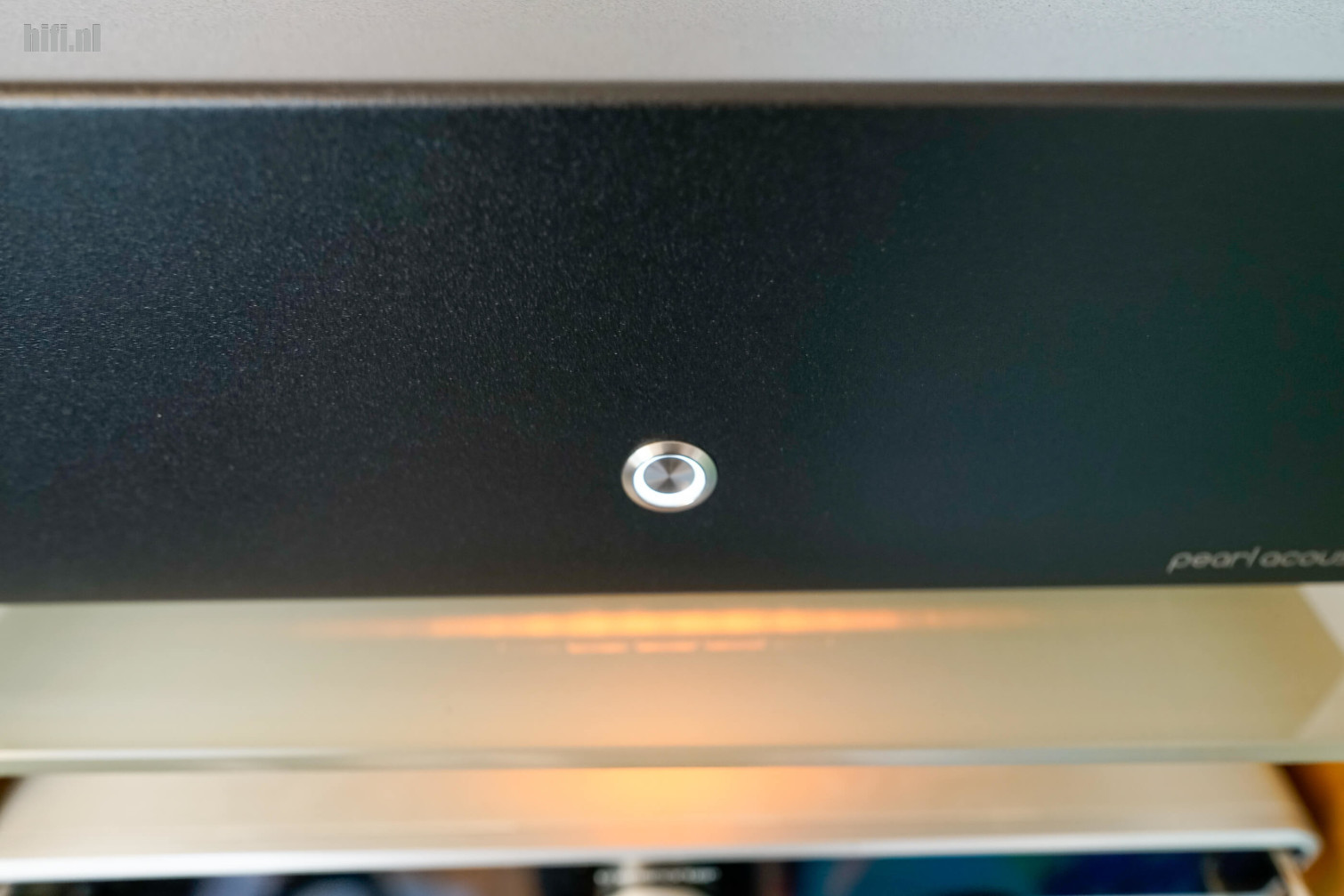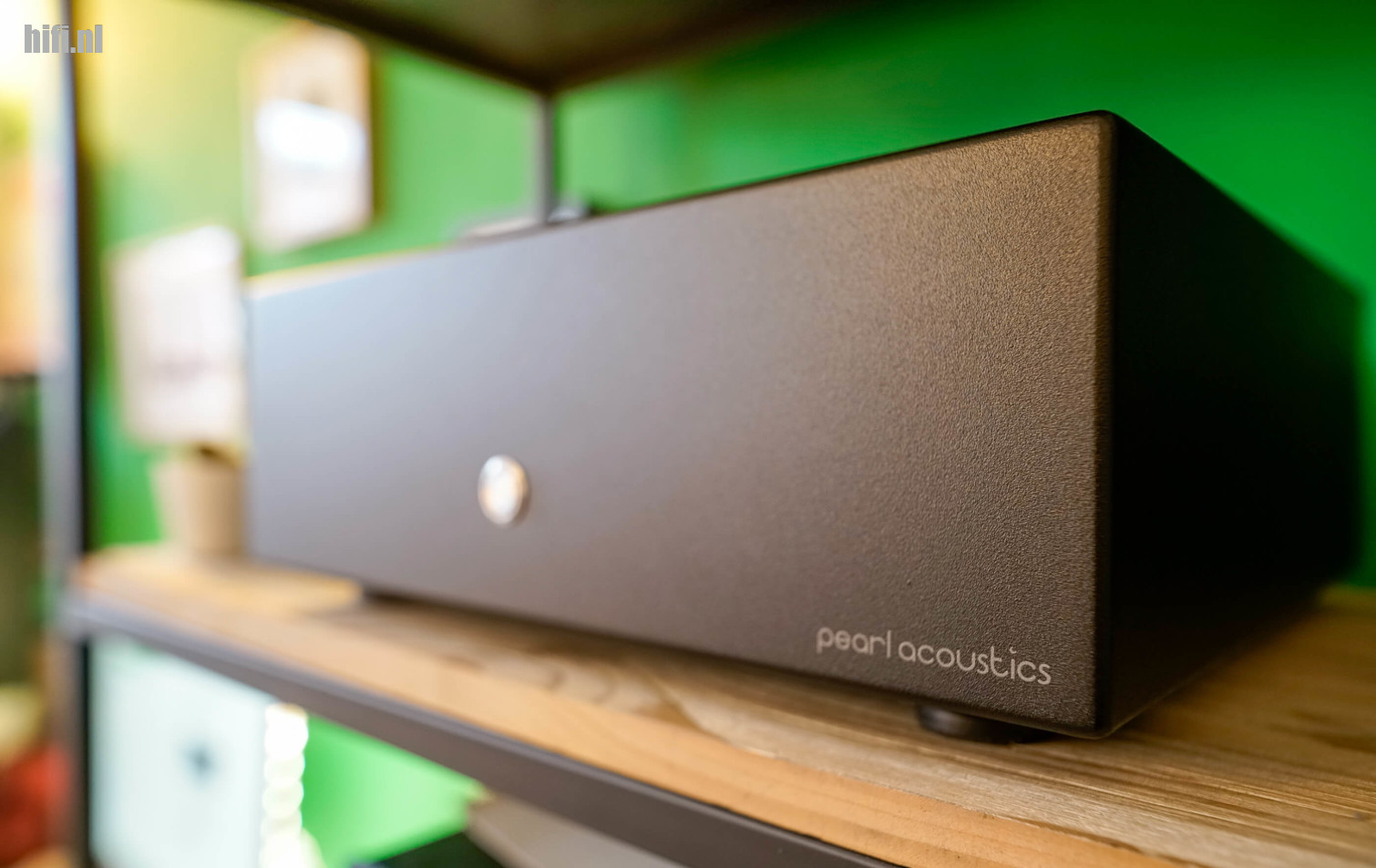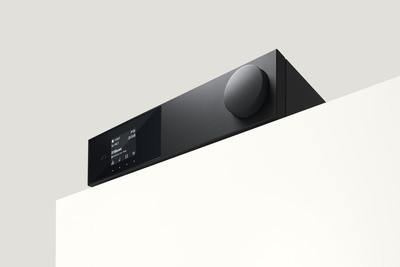
The Belgian-British company Pearl Acoustics has been making a name for itself for years with its own loudspeaker design. The new 7040 power amplifier is their first creation in the field of amplification, based on Purifi’s Eigentakt – but with a very distinctive interpretation.
Voor Nederlands, klik hier
Pearl Acoustics
In many ways, Pearl Acoustics is a unique audio company. Founded by Harley Lovegrove, a Brit who eventually built found a home in Belgium, for a long time it focussed on bringing single-driver speakers to the market, built to a very specific philosophy. Pearl Acoustics has since outgrown that Sibelius. No longer content with a single speaker model, a while ago the brand started contemplating building their own amplifiers. This led to the recent introduction of the 7040 power amplifier, one of two new amps Pearl Acoustics has on its roadmap.
Next up is the 170 power amp, which is slated to turn up soon. A pair of power amplifiers? That’s correct, but we are talking about two different products. On the one hand, the Pearl Acoustics 170 is a dual-mono, fully tube-based Class A design, delivering 16 to 18 Watts of power, depending on whether you choose the KT150 or KT170 tubes. It would be difficult to imagine anything more diametrically opposed to the 170 than the Pearl Acoustics 7040. Its name is a total giveaway; this model is a power amp built around the acclaimed 1ET7040 modules that Bruno Putzeys designed for the Purifi start-up. Class D, then, but – to be clear – still analogue.

Of course, there are quite a few power amplifiers available that use the Purifi EigenTakt modules. After all, manufacturers can simply buy them off the shelf. This means that besides Purifi amplifiers from brands like T+A or NAD, you also find options from built-to-order companies. Considering the amount of Purifi amps on the market, what is the added value of the Pearl Acoustics 7040?
Dynamic or Relaxed
In the run-up to this review, we had a conversation with Ajay Verma, the director of Pearl Acoustics and also the driving force behind the 7040, about the decision to manufacture amplifiers. A key role was played by Harley – who now takes on more of an advisory role – who be called a ‘hi-fi personality’ on YouTube, where he regularly posts popular videos about music, rather than equipment. Essentially, in one video Harvey remarked that although Purifi technology undeniably belongs to the best in the world (particularly when looking at distortion), it is missing ‘something’. Call it emotionality or colour, sometimes the class D technology is also described as ‘dry’. He originally made this observation in a 2023 video, in the same breath challenging designers to come up with an addition to the Purifi modules that would fill this gap. Ajay responded to that call, which ultimately led to a supplementary 'front-end' he designed and implemented in the 7040.

From the onset, the Pearl Acoustics 7040 was intended to sound different from typical Purifi power amps. At the same time, there are also people who greatly appreciate the inherent transparency of those EigenTakt-modules. To serve both groups, the amplifier features a solid switch at the bottom of the front panel. By clicking it right or left, you choose between a 'Relaxed' and a 'Dynamic' mode. The former, signalled by a warm orange light strip that appears just in front of the amplifier, is the more organic sound Lovegrove was aiming for. In the Dynamic mode, you get the full dynamic Purifi experience – basically the standard EigenTakt sound. You can switch these modes on the fly. It would have been nice if you could do that with a remote, but perhaps incorporating that possibility would introduce more complexity and components that might have compromised performance. Which is not desirable. Ultimately, you prefer to keep a power amplifier as minimal as possible.
What exactly happens technically when you slide the switch to 'Relaxed' is something Pearl Acoustics prefers not to disclose. Even when we asked Ajay directly, he demurred and referred to it as a "fully custom-built differential input stage." In the Dynamic mode, four op-amp circuits from Sparkos Labs are involved – a small-scale American component builder who also makes products for the DIY market and enjoys a strong reputation. Whether they are also responsible for the input stage in the Relaxed Mode is not clear. It would have been interesting to know exactly details of the active circuit, but at the end of the day, what it’s the acoustical result that matters most.
Massively Built
Power amplifiers are not generally furnished with the most exciting appearance. The 7040 does not truly deviate from that, essentially being a sturdy box with only one large on/off button in the centre. A small light gray 'Pearl Acoustics' logo is featured on the front, and that's about it in terms of embellishments. Yes, the word 'immense' can certainly be used to describe the stylistic contrast between the anonymous black metal box of the Pearl and the illuminated VU meters and many buttons on the T+A DAC200 next to it in the test room.
Despite the lack of outward features, the 7040 does not reside in a simple case. The solid chassis is completely seamless and screwless, which gives it an understated appearance that remains impressive upon closer inspection. We hear from Pearl that the 'Made in the UK' casing, due to its thickness and powder-coat finish, consumes a significant portion of the production cost.
Another unusual feature is the availability of two pairs of inputs. This means you can pair the 7040 with two preamplifiers – a bonus for those who like to compare pre-amps. A preamplifier is, after all, very decisive for the sound, so having that option is interesting.
SQ (Sound Quality)
The 7040 remained in the test room for almost two months and was connected to numerous loudspeakers. During that time, I never noted a power shortage or being underwhelmed by its ability to drive a particular pair of loudspeakers. Those Purifi modules are quite powerful after all, and the dual mono construction means you can count on 250 Watts per channel (at 8 Ohms). No surprise then, that issues with driving the speakers never reared their head, even when I finally decided to conduct a large part of the review using the Radiant Acoustics Clarity 6.2 speakers. Partly, I chose those speakers because they are also built around Purifi technology, specifically the USHINDI woofers with the distinctive surround around the cone. While it’s not the case that Purifi claims their amplifier modules yield an extra advantage when paired with their own drivers, it did seem like a fun exercise. The Clarity 6.2s are also not the easiest to drive. In this test setup, the T+A DAC200 served as the preamplifier, with an Eversolo DMP-A8 (via USB) and a Marantz SACD30n (via optical) as sources.
Using the Marantz disc player gave me a good excuse to dust off some of the London Symphony Orchestra disc collection again. The LSO stubbornly continues to release SACDs, even after the rest of the world has given up on this format, giving me an opportunity to use a rarely used function of the SACD 30n.
The Dvorák collection with Symphonies Nos. 6 to 9 conducted by Colin Davis is a personal favourite when it comes to the LSO recording, particularly the Ninth, 'From The New World.' I find the first movement to be an excellent test track for testing a system because it alternates between soft passages with delicate detail and grand, dynamic outbursts with horns resounding with immense vigour. Perhaps it is because of the latter intensity that I preferred the Dynamic mode whilst listening to this specific symphony. A rare choice, as most of the music during testing sounded most organic and pleasing in the Relaxed mode. But in this case, I preferred the 7040 delivering the exhilarating experience as completely as possible.
The grand conclusion of the first movement, with booming timpani and brass that gives it everything, is a highly dramatic piece of music that the Pearl Acoustics amplifier delivered with the appropriate intensity. It leaves you almost breathless, which is what makes the transition to 'II. Largo' so enthralling. The second movement contrasts strongly with the first, with a shift to slow winds and brass that evoke a melancholy atmosphere. There is a certain feeling of alienation in this section, with vulnerable details played very quietly, forcing you to lean in to catch it all. A lot of these delicate sounds can easily be lost, but with the 7040, there was the resolving power to render it all.

Moving to the 'Hail To The Thief' live album recently released by Radiohead made for an immense shift in style if not in tone. Although they actually date from 2003 to 2009, the recordings nearly sound like they were created yesterday. As most will remember, the album title refers to the U.S. presidential election that brought Bush the younger to power and the outrage surrounding the United States' foreign policy at the time. You feel indignation present in the concert recordings, partly due to the very audible audience reactions.
Quite impressive how these collected tracks are barely inferior to the originals in terms of complexity. No challenge for the Pearl Acoustics amplifier, as it effortlessly revealed the many layers of instruments and samples on 'Sit Down. Stand Up' via the Clarity 6.2s. The manic feel and the drive weren’t lost either, even in Relaxed Mode. With 'The Gloaming,' the 7040 delivered a beautifully open soundstage, grand but also with some instruments contrarily feeling closeby. The speakers are partly responsible for this, but the Pearl Acoustics also showed itself in possession of the ability to position those different layers discretely and correctly.
The same goes for 'There, There,' where the audience sings along en masse, which elevates this version above the studio version. A pat on the back is in order here for the Pearl Acoustics’ ability to truly extract everything from a recording. Even in Relaxed mode, it’s Purifi-roots remain dominant, choosing honesty over much coloration – although Greenwood's angular guitar riff was wonderfully crisp, and more exciting than in a pure EigenTakt-mode. It’s clear that it’s a light but noticeable touch that the Relaxed mode applies.
A Beautiful Instrument
Towards the end of the testing period, a pair of DALI Epikore 7s appeared in the test room. The tonal balance of DALI has long appealed to me, and in many respects, the Epikore 7 is 'simply' a further distillation of their basic concepts. 'Softening' it even further with the Relaxed Mode didn't seem strictly necessary at first, but after listening longer with it engaged, the 7040 and the DALIs turned out to be a wonderful match. Yes, the Relaxed Mode remains a rather subtle tweak that mainly will soften speakers with pronounced treble detail. With the EPIKOREs it was effective too, even though they aren’t that bright. It highlighted Arooj Aftab's voice just a little more in the captivating 'Na Gul’, for example, and delivered the sharp trumpet outbursts by the late jaimie branch on 'Burning Grey' more integrated as part of the whole (although, in Dynamic Mode, leaving those high notes to grate a little would have been also fitting as well, making it more manic).
In between, I spent some time experimenting with DACs, switching between the T+A DAC200 and a Musical Fidelity M8x DAC staged for another review. Both are excellent DA converters, but each possesses its own character (the difference was not huge, but the T+A appeared more accurate, the MF smoother). An important observation is that the Pearl Acoustics amplifier in Dynamic mode retains the transparency to let those delicate changes be noted. For instance, with the beautiful 'Where is Home / Hae ke Kae,' in which the cellist Abel Selaocoe mixes African melodies and singing, both solo and in choir, and Western European classical music, the changes in how the cello appeared were profound. The album is a fascinating encounter between musical traditions from two continents, bursting with warmth and finesse. It is also intriguing how a DAC change alters the experience slightly here (it is, admittedly, subtle, but that is often the case at this level). Allowing those adjustment to be heard is an important EigenTakt quality, due to its lack of distortion, and it’s not missing with the 7040 either. Without a doubt, the implementation of the Purifi modules by Pearl Acoustics has been expertly done.
Conclusion
There is a common belief that as EigenTakt power amps contain the same Purifi modules, they must sound quasi-identical. But that is not entirely correct; anyone who doubts that should listen to, say, the T+A and NAD power amplifiers, which, despite containing identical amplification modules, deliver a very own sound. Or listen to the Pearl Acoustics 7040, which, besides its custom build, also adds an extra mode that complements the inherent transparency and neutrality of EigenTakt with a more rounded, organic setting.
As a user, you can always choose the original or opt for those smartly chosen adjustments, which, with a light touch, often deliver just that little bit more listening pleasure. This power amp might not be cheap, but Pearl Acoustics does offer something in return, both in terms of sound and finish.
Pearl Acoustics 7040
7.299 euro | www.pearlacoustics.com
Rated 5 out of 5







